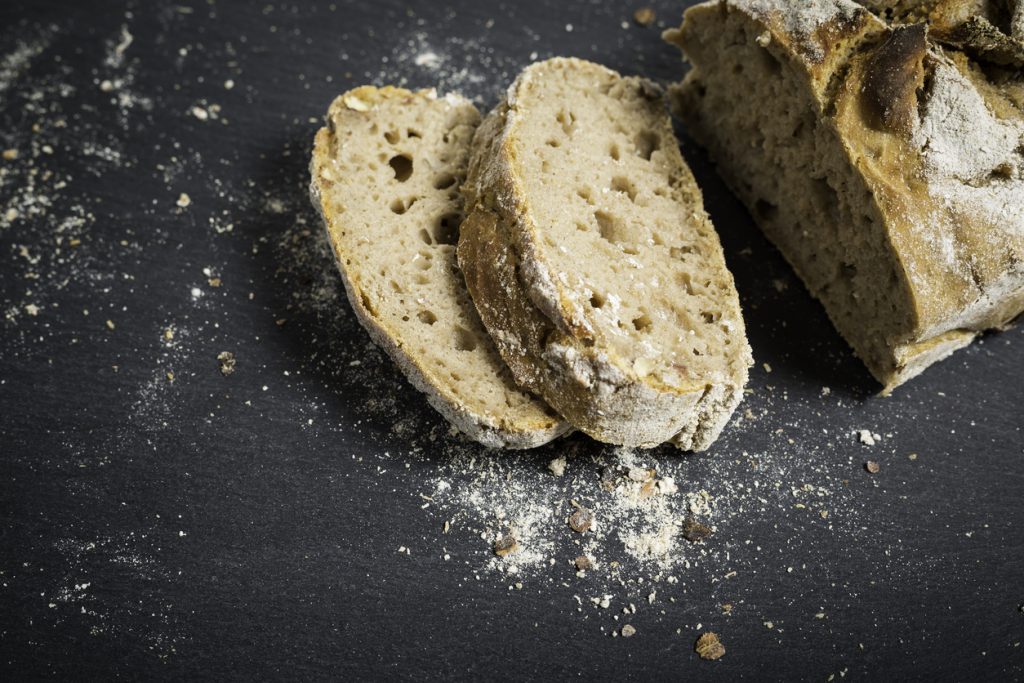- General
Bread Recognition Software, Bread Art and Wheat Genomes

Spring has sprung, it’s a beautiful day and all over Britain people’s thoughts are turning to alfresco eating. If your customers would appreciate the unforgettable flavour of our artisan freshly-frozen breads, it’s time to ask us for a delicious free box of samples, delivered direct to your doorstep, 100% British from field to plate. We’ll look forward to hearing from you. In the meantime, here’s the news.
Name that bread in one…
A Japanese bakery is using bread recognition software to accurately ring up items at the till instead of cashiers ringing the prices in by hand. The device they’re using is called Bakery Scan, which identifies and calculates the price of as many as ten items of bread per second.
It isn’t a new idea. Apparently tech giant Toshiba tried to make a similar gadget for supermarkets a few years ago, but gave up when it turned out to be too difficult to eliminate background images and handle the vast amount of data generated by supermarket inventories.
Bread genome more complicated than the human genome
Wheat is a staple food for more than two billion people around the world, and bread is often seen as a very simple food. In actual fact it’s far from simple. According to a report in Science Daily, the Earlham Institute has finally sequenced the bread genome, and it has proved a surprisingly complex task.
A group of clever scientists have developed new methods to investigate the wheat genome, and they’ve just created the most complete genetic picture yet. It reveals more than 20,000 new genes that were absent from previous studies. And, bizzarely, the three sub-genomes contain around five times more DNA than the human genome. Now that’s a humbling thought!
The world’s most complete picture of the wheat genome contains some marvellous insights, including the specific location and detailed annotation of over 100,000 wheat genes. It’s amazing. But best of all, the team’s methods have been made available for anyone to use. It matters because wheat DNA varies across the world, something that plays a big part in its success.
What’s next? The team has already begun sequencing a host of British wheat varieties, and they hope scientists in other countries and on other continents will do the same thing, sequencing the genomes of the varieties that are important to them.
New York bakery urges citizens to forgo bread for a day
As President Trump’s immigration rules being to bite, a bunch of thirty one workers at New York’s oldest artisan bakery, Tom Cat in Queens, are set to lose their jobs thanks to their immigration status. They’ve got together to arrange a protest, urging the city’s restaurants and consumers to stop selling or eating bread for the day in New York’s first ever ‘Day Without Bread’. The protest was kicked off when the bakery’s management team told workers the company was being investigated by the Department of Homeland Security.
Many of the workers have been at the bakery for a decade or more, but if they don’t provide Homeland Security with the right employment documents they face being sacked. Apparently the workers who can’t stay will get ‘generous severance packages’. A number of NYC restaurants have pledged their support, and one will be donating a percentage of their bread sales on the day to the Tom Cat workers’ relief fund. A GoFundMe campaign has also been successful, so far raising $30,000 to cover essential expenses like rent and food for the workers and their families.
Art made from bread packaging
Paint, pastels and pencils just don’t cut the mustard. According to US artist Justin Jones, those little bendy plastic tabs that hold bread bags closed are the bees knees, a revolutionary art material. His exhibition, called Bread Tab Mosaics, is on show at the City Hall Gallery in Lancaster, USA, a series of big portraits created using thousands of coloured bread tags meticulously attached to canvas to create vivid portraits of people and animals.
Jones graduated from the Pennsylvania College of Art & Design in 2007 and he’s been doing portraiture ever since, at first painting on mugs and plates. So how did he discover that bread tabs made an excellent art material? Apparently he started collecting them while working in a restaurant, having been captivated by the sheer variety of colours, shapes and sizes. Instead of throwing them away, he decided to start salvaging them so he could transform them into art.
Jones likes the thought that something commonplace and practical can be used in an artistic way. As he said, “I don’t like being wasteful. The universe was telling me to save them, make something bigger.”
As you can imagine it takes an awful lot of bread tabs to create a portrait. So Jones asks friends and family to save tabs for him. His granny even collects them from students at the school where she works. You can see his work here.



